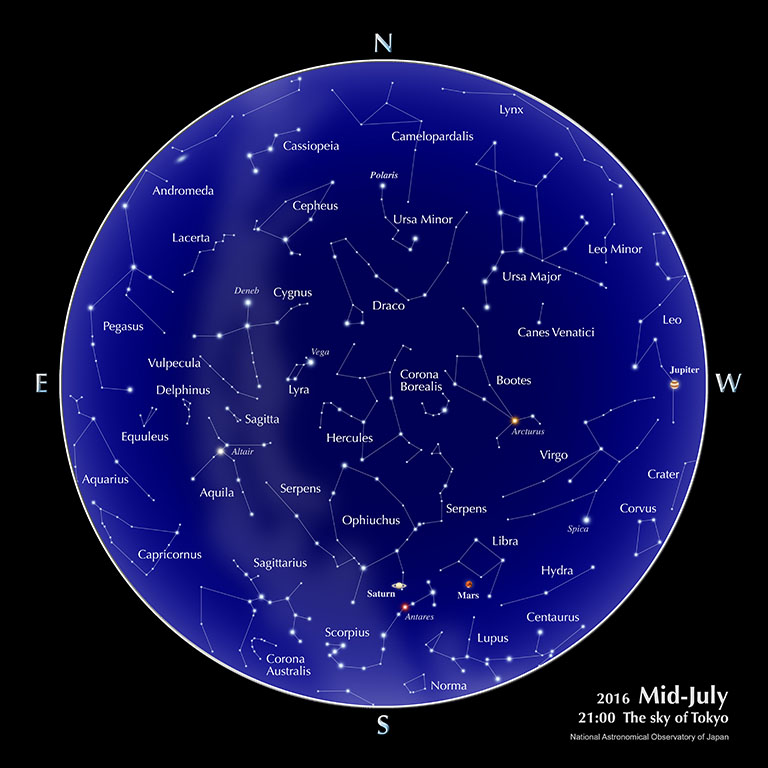Astronomical Information | 2016 | July
The sky of Tokyo

Calendar (July)
| 4 | New Moon |
| 5 | Earth passes aphelion |
| 7 | Mercury at superior conjunction |
| 12 | First Quarter Moon |
| 18 | Ocean Day [Umi-no-hi](national holiday) |
| 20 | Full Moon |
| 27 | Last Quarter Moon |
| 30 | Uranus at stationary point/ Aquarid δ (Delta) Meteor Shower peaks around this time (The best visibility is after midnight for 6~7 days around this date. About 3 meteors per hour are expected. There is no moonlight after about the time the meteor shower passes maximum, so conditions are favorable.) |
The days for the peak activities of the meteor showers are based on the predictions of IMO (International Meteor Organization).
Planets
- Mercury
- Mercury appears close to the Sun and is not suited for observations. It reaches superior conjunction on the 7th.
- Venus
- Venus appears close to the Sun and is not suited for observations.
- Mars
- Located in the constellation Libra, Mars can be seen in the southern evening sky. Its brightness is -1.4 magnitude to -0.8 magnitude.
- Jupiter
- Located in the constellation Leo, Jupiter can be seen in the western evening sky. Its brightness is -1.9 magnitude to -1.7 magnitude.
- Saturn
- Located in the constellation Ophiuchus, Saturn can be seen in the southern to southeastern evening sky. Its brightness is 0.2 magnitude to 0.3 magnitude.
Source: Ephemeris Computation Office, NAOJ
With the “Sky Viewer” you can easily explore the appearance of a typical urban night sky (planets and constellations are visible).The Celestial Phenomena section of the glossary explains the planetary phenomena terms: greatest elongation, opposition, conjunction, stationary, etc.